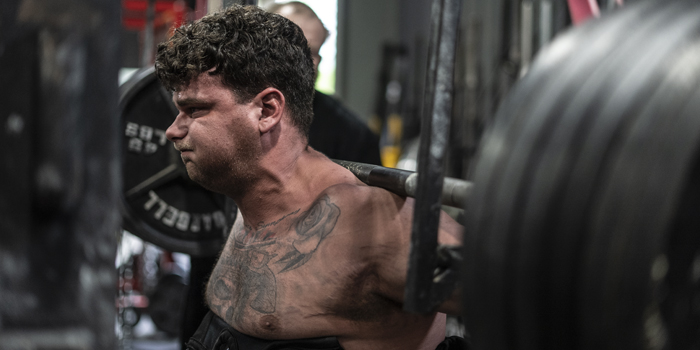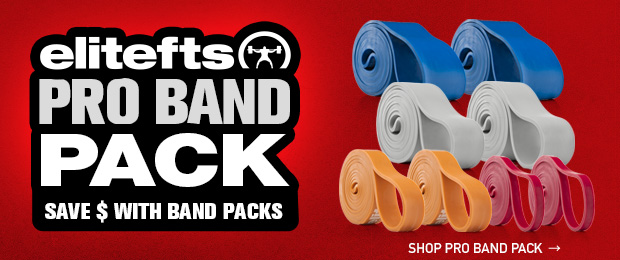
Every day, people put their money and pride on the line to get the earliest surgery or injection date possible. Mentally they are ready for their injury to be over, but is their physiology?
It defies common sense to delay surgery or injection to seek nonsurgical care (Chiro, PT, Acu, Massage) to improve ROM, tissue quality, and muscle function because that's what surgery or the shot is supposed to do, right?
If that was the case, cortisone shots, stem cells, PRP, and surgeries would always have you back to or exceeding your pre-injury performance and not left frustratedly scratching your head when they stop working.
Injury Cycle
Here we've simplified the injury cycle to show the entry and exit points and why it's important to get your physiology right to absorb the benefits and optimize your upcoming injection or surgery.
↓
Tissue Trauma
(Overuse, tears, tendonitis, arthritis, etc.)
↓
Inflammation
(Response to tissue trauma)
↓
Muscle Spasm
(Trigger points form, constricts blood vessels)
↓
Adhesions
(Inflammatory cells are released into the tissues creating adhesions)
↓
Altered Neuromuscular Control
(Muscle inhibition/inactive)
↓
Muscular Imbalance
(Atrophy, Kinetic chain compensations)
↓
As you can see, there are many entry and exit points within the injury cycle. The success of a surgery or injection relies heavily on the primary issue being localized tissue trauma and/or localized inflammation. If there is a significant contribution from another point(s) in the cycle: spasm, adhesion, muscle inhibition, atrophy, compensations, and/or lifestyle factors, there is a high likelihood of temporary improvement and reoccurrence.
There would be no surprise if you looked up into a thousand-yard stare after reading this. It's the same look I get from new patients explaining why they've repeatedly dealt with the same injuries.
How to Benefit From Your Treatment
Now whether you're going for surgery or an injection, here are some CRUCIAL POINTS to consider to benefit from your treatment.
1. Biochemistry
Stem cell, PRP, and cortisone shots work at a biochemical level. Cortisone is anti-inflammatory which will improve the local biochemistry allowing the pain cycle to break and begin tissue healing. Given inflammation is the primary issue and no significant muscle inhibitions or compensations are contributing, cortisone should work.
PRP and stem cell, on the other hand, are drawn from you, stimulated then reinjected to promote healing. Yet, your current biochemistry is likely off since you're seeking treatment. High inflammatory mediators alter PH levels, causing nerve and blood vessel irritation/permeability, which releases more inflammatory mediators creating more metabolic waste and poor oxygenation.
Essentially the painful area has turned from a fresh, clean running stream into a swamp. You have two options 1) Extract the swamp PRP or stem cell and reinject it into a swampy environment hoping for the best, OR 2) Take the time to improve the biochemical environment and the quality of your PRP or stem cells.
For those who have the money, there are lab tests you can run to assess inflammatory markers and mitochondrial health. Mitochondria are important because they are the powerhouse within every cell. Beyond energy production, the mitochondria help with heme synthesis (carry oxygen), hormone synthesis, and STEM CELL differentiation.
For those without money, the poor man's guide to biochemistry lies in the following two points: Tissue quality and contraction quality.
2. Tissue Quality
As alluded to before, if your biochemistry is off, your muscles will have a jerky rather than steak texture. This is because muscles that suffer from poor blood supply (limited oxygen and nutrients) and metabolic build up, form knots. Trigger points will form and "dehydrate" the muscles.
It's been shown that the Autonomic Nervous System (ANS) controls smooth muscle contraction and blood vessel dilation. Stress/pain can cause prolonged fight response signaling smooth muscle and blood vessel contraction, aka knots and trigger points. Remove the stress to the ANS and muscle to improve blood vessel tone/function and tissue quality.
3. Contraction Quality
Much like the ANS can cause trigger points, muscles become inhibited for the same reasons as a protective mechanism leading to poor quality muscle contractions. This limits the number of motor units and force a muscle can produce to prevent further injury. More often than not, this goes unnoticed as the human body is exceptionally adaptable, and you create compensations to continue to perform and live your daily life. It's a double edge sword because as the compensation's expiration date nears, you'll start to notice the trigger points, possible atrophy, which now may limit your performance and obvious compensations.
At this point, you are likely shaking your head, thinking, "WTF? There has to be a straightforward treatment that works like surgery! He hasn't talked about surgery."
Surgery carries the same concerns as injections plus the physical damage of cutting through skin, muscle, nerve, tendon, ligaments, and installing anchors, plates, and sutures. The biggest difference is people know the importance of post-surgical rehab, so they are willing to dedicate weeks and months to it, something most won't do after an injection.
At most post-injection, they slow down for a couple of days to let the pain settle.
Now, rather than being reactionary with rehab after a reactionary surgery, if we are proactive about rehab before a reactionary treatment, we can improve the biochemistry, tissue quality, and muscle quality so that you can possibly avoid the injection or surgery altogether. Worst case, you have set yourself up to be bulletproof following your injection and surgery.
Ways to be Proactive
1. Seek a Sports Therapist with Manual Skills
Preferably this is someone who has a sports background and makes treating athletes a priority, not someone who happens to treat a few. If they throw you under a theragun, ultrasound, or slap stim pads on you for a few minutes and walk away, be weary.
Treatments should be comprehensive, including some combination of joint manipulation, electro-acupuncture/dry needling, and manual soft tissue therapies. If they understand exercise progression and workload management, this is a bonus for fun conversations and ways to train around your injury.
2. Lifestyle
Mix in a few glasses of water amongst the monsters, pre-workout, and coffees. These are all stimulants ramping up your ANS "fight" response. As the tissue quality section mentioned, the ANS controls smooth muscle contractions. Allow your nervous system to settle so you can better recover and absorb the benefits of your treatments and training. Tracking your Heart Rate Variability (HRV) or Resting Heart Rate (RHR) can help determine the state of your nervous system.
3. Home Care
Access to vibration plates, rollers, or guns, along with cupping therapy, are great ways to stimulate the nervous system and improve blood flow to facilitate recovery.
You've abused your body up to this point. Show it some love and come back stronger than before.
Recover. Adapt. Perform.
Dr. James Werner is a performance chiropractor and coach to elite hockey players ranging from junior to 15-year pros. James uses chiropractic adjustments, acupuncture, lab tests, and his strength and conditioning background to help his athletes reach peak performance despite their injuries or age.










